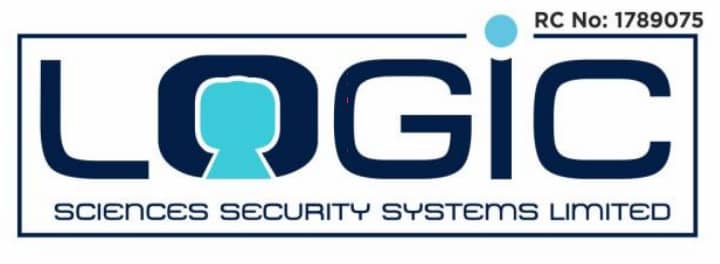Ensuring the safety of passengers and staff in public spaces like airports, courthouses, and correctional facilities necessitates the use of advanced people screening equipment. These technologies detect concealed weapons, explosives, and other contraband without requiring physical contact. This article provides an overview of the primary types of people screening equipment, their functionalities, and considerations for their use.
Types of People Screening Equipment
1. Metal Detectors
- Walk-Through Metal Detectors (WTMDs): These devices create a magnetic field that detects metallic objects as individuals pass through. Security checkpoints commonly use them to identify concealed metal items.
- Handheld Metal Detectors: Portable devices used for targeted screening, often employed when a WTMD indicates the presence of metal.
Also read: Where Are Baggage and Parcel Inspection Equipment Used | Full Guide
2. Advanced Imaging Technologies (AIT)
- Millimeter Wave Scanners: Utilize non-ionizing electromagnetic radiation to detect both metallic and non-metallic threats concealed under clothing. There are two types: active systems that emit millimeter waves and passive systems that detect naturally occurring millimeter wave emissions from the human body.
- Backscatter X-Ray Scanners: Employ low-dose ionizing radiation to create images by detecting X-rays that scatter back from the body. These scanners can reveal objects hidden under clothing but have raised concerns regarding radiation exposure and privacy.
3. X-Ray Scanners
Primarily used for screening baggage, X-ray scanners produce detailed images of the contents within luggage, allowing security personnel to identify prohibited items such as weapons, explosives, and contraband. There are two main types: single-view scanners, which provide a single perspective image, and multi-view scanners, which offer multiple angles to increase the likelihood of detecting hidden threats.
Also read: Trace Detection Equipment: Where are they Used?
4. Explosives Detection Systems (EDS)
These systems are designed to detect and identify explosive materials and devices. Technologies used include chemical sensors, ion mobility spectrometry (IMS), and computed tomography (CT) scanners. Explosives Detection Systems or EDS are critical for preventing terrorist attacks and ensuring the safety of everyone in the facility.
5. Biometric Systems
Biometric systems enhance security by verifying identities through unique biological characteristics such as fingerprints, facial recognition, and iris scans. These systems are highly reliable and reduce the need for manual identity checks, thereby speeding up the security process and improving accuracy.
6. Surveillance Cameras
Surveillance cameras provide constant monitoring of all areas within a facility. Modern systems use high-definition cameras, often with facial recognition capabilities, to identify suspicious activities and individuals. These systems are integrated with other security measures to provide a comprehensive security network.
Also read: Explosives & Narcotics Detection Systems | Where Are They Used?
7. Access Control Systems
Access control systems regulate who can enter restricted areas within a facility. These systems use keycards, biometric verification, and PIN codes to grant or deny access, helping prevent unauthorized individuals from compromising operations.
Safety and Regulatory Considerations

Radiation Exposure and Safety Standards
While advanced imaging technologies enhance security, they also raise concerns about radiation exposure. Backscatter X-ray scanners emit ionizing radiation, albeit at low levels. According to the American National Standards Institute (ANSI) and the Health Physics Society (HPS), the dose per screening should not exceed 0.25 µSv, which is less than the radiation received during a few minutes of natural background exposure.
Also read: How Does Baggage and Parcel Inspection Equipment Work | Full Guide
Millimeter wave scanners, on the other hand, use non-ionizing radiation and are considered safe for all individuals, including those who are pregnant.
Regulatory Compliance
Manufacturers of security screening equipment that emit radiation are required to comply with various regulations, including submitting radiation safety reports to the Food and Drug Administration (FDA) and adhering to standards set by organizations such as ANSI and the Occupational Safety and Health Administration (OSHA).
Applications of People Screening Equipment
People screening equipment is deployed across various sectors to enhance security:
- Airports and Transportation Hubs: To prevent prohibited items from being carried onto aircraft or other transport modes.
- Government and Military Facilities: To control access and protect sensitive information and personnel.
- Correctional Institutions: To prevent contraband from entering secure areas.
- Public Venues: Such as stadiums and concert halls, to ensure the safety of large gatherings.
- Corporate Offices: For protecting intellectual property and ensuring employee safety.
Also read: What are Advanced Security Screening Products & Solutions?
Conclusion
Understanding the various types of people screening equipment and their applications is vital for implementing effective security measures. By considering the specific needs of your facility and adhering to best practices and regulatory standards, you can enhance safety while respecting individual rights and comfort.
If you are in Nigeria and need access to trusted, certified people screening equipment—including millimeter wave scanners, x-ray backscatter systems, and metal detectors—visit Logic Security. They specialize in supplying advanced security technologies that meet international standards for safety and effectiveness.
Follow us on X (formerly Twitter), @Logic_sss, for more updates.
References
- www.fda.gov – Products for Security Screening of People
- www.pointsecurityinc.com – Different Types of Airport Security Equipment


